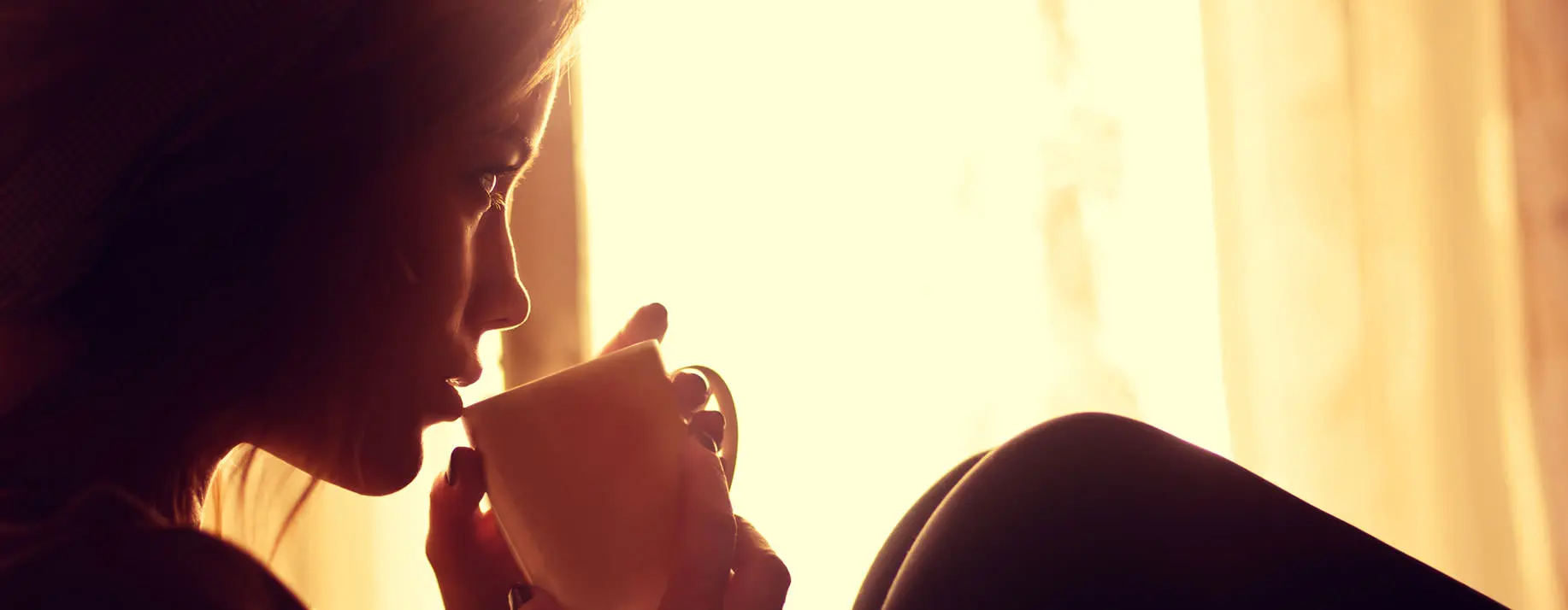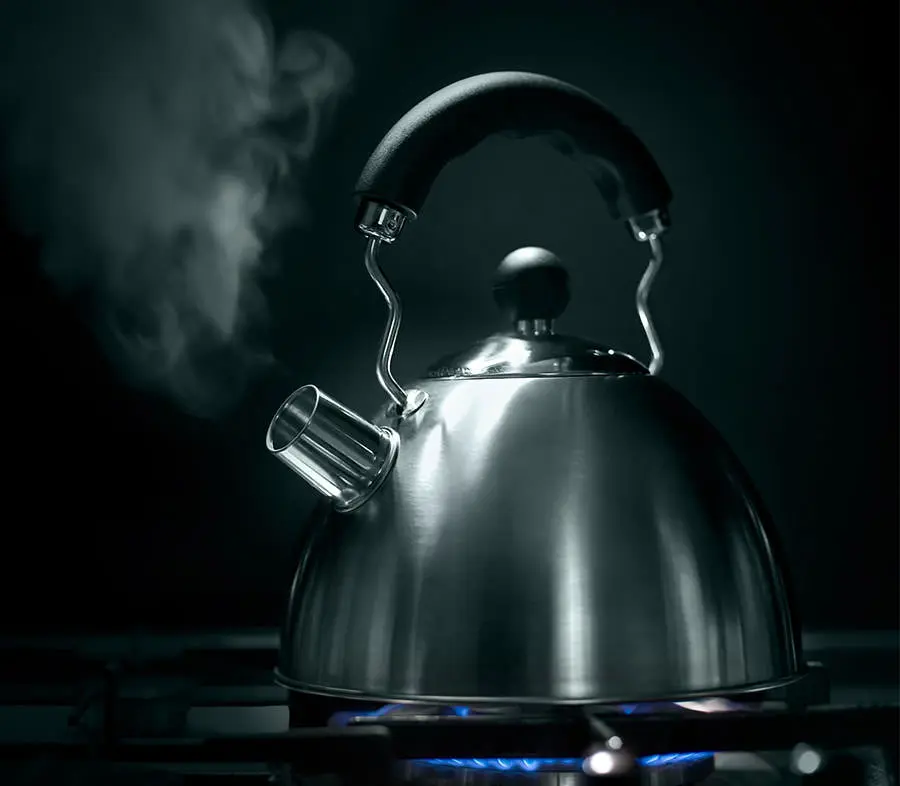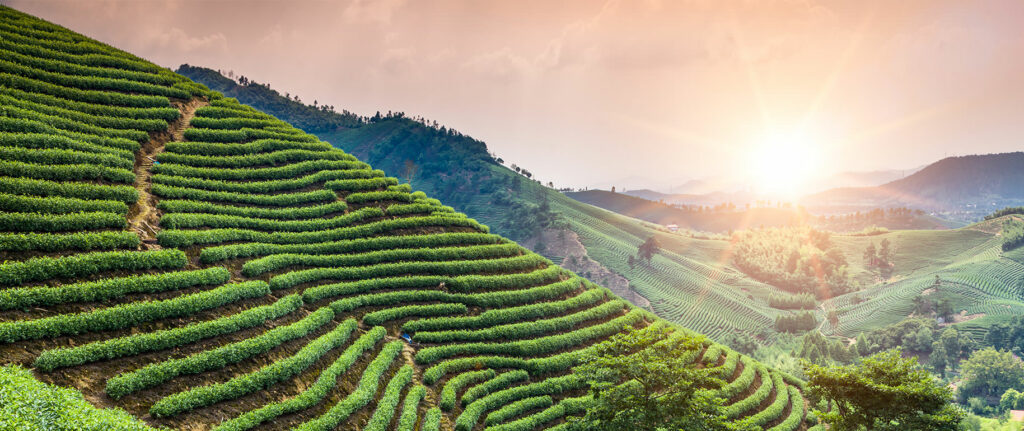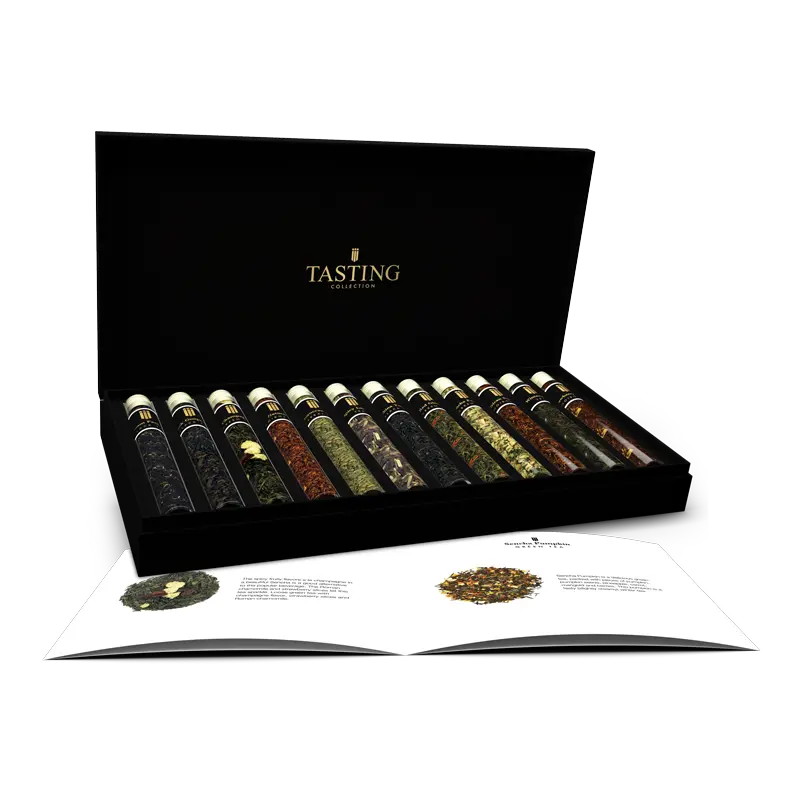
Tea
Tea comes in many different qualities and brands. Tasting Collection has brought together the best qualities from around the world in collection. So that you not only learn about the origin and production process of tea, but are directly presented with the best teas in the world and can experience for yourself how they taste when brewed the “right” way.
Making tea: how do you do it?
Every culture has its own way of preparing tea. The English drink their tea strong with milk, the Chinese their tea “Gong Fu Cha” (tea with great skill) and the Turks prefer to put a lot of sugar in their tea. What all methods have in common is the use of the finest quality loose tea, poured into a teapot with hot water. The easiest way to prepare this loose tea yourself is with a teapot and a tea strainer, egg, filter. Here it is important that the tea leaves have enough space to unfold, so that the aroma and flavor are fully expressed.
For coarse leaf loose tea, prefer to use a teamaker, tea press or put the tea loose in the teapot. For the right temperature, use a special tea thermometer, a kettle with a temperature regulator or go by your gut. Pour the water onto the tea and keep a close eye on the time, for example with a tea timer. Of course, personal preference also plays a role here. While brewing, the tea must remain at temperature. Therefore, place the teapot on a tea light or keep the tea warm under a tea hat.
Water Temperature for Tea Making
Basically, we recommend that you drink your tea the way you like it best. After all, tastes differ. However, as a guideline, we do provide “brewing instructions” with all of our teas so you know how water, temperature and tea can affect each other.
Below you will find the ideal temperature to set for each species:
| Type of tea | Temperature |
| White tea | 80ºC |
| Yellow tea | 80ºC – 85ºC |
| Green tea | 65ºC – 80ºC |
| Black tea | 90ºC – 100ºC |
| Oolong tea | 100ºC |
| Pu Ehr tea | 95ºC – 100ºC |
| Rooibos tea | 100ºC |
| Herbal tea | 100ºC |

The right amount
With the amount, we recommend you experiment. Each Tasting Collection tea tube provides enough tea for several cups, so experiment to your heart’s content.

How long to infuse?
You probably know the warning to remove the tea pod from the water after only a few moments. This makes sense, because a lower quality tea quickly tastes very bitter. However, a good quality tea does not taste extremely bitter! Do the test! Try a tea of very good quality (for example, that of Tasting Collection), brew it at night before going to bed and taste it in the morning.
So how long should a tea be allowed to steep? Quite simply, as long as you like! You can make the taste stronger or softer depending on what you like to drink. Just keep in mind that the leaves need at least 15 minutes to release their antioxidants to the water. So if you remove the tea leaves from the water sooner, you will drink a mild tea, but you will not get much antioxidants!
By the way, did you know that you can pour the same tea leaves several times with hot water? The taste becomes a lot milder with each pouring, but the leaves continue to release antioxidants into the water.
Just be careful not to drink your tea too hot. Drinking too hot tea (hotter than 70 degrees Celsius) has been linked to esophageal cancer.
Let wel op dat je je thee niet te heet drinkt. Het drinken van te hete thee (heter dan 70 graden Celsius) wordt in verband gebracht met slokdarmkanker.

The influence of water on the taste of tea
Drawing tea in hot water mainly releases aromatic and flavoring substances, including theine. Theine is another name for caffeine, a substance that has an effect on human functioning due to its mildly stimulating effect. Many people feel more alert after consuming caffeine. A cup of tea contains an average of 30 milligrams of caffeine; a cup of coffee contains an average of 75 milligrams of caffeine. In addition to caffeine, tea also contains theanine and fluoride.
Not only the tea, but what water you use to brew your tea with determines the final result. After all, tea is 99% water. The quality of the water you use to brew tea affects its taste and aroma. Lime and minerals in the water react with the enzymes in the tea and alter the taste and aroma. Tap water does not give the best results. It generally contains too many minerals and the “dry residue” (lime) content is too high to achieve optimal results. The best is a pH of 7 and a dry residue of less than 50 mg per liter. With the use of special filters or a ‘reverse osmosis’ filtration, the mineral and dry residue content can be reduced to the proper soft and pure water to achieve optimal quality for tea preparation. You can also use bottled mineral water. In the Netherlands, Spa Blue is the most neutral water with a pH of 6 and a dry residue of 33 mg per liter. Especially with delicate teas like white tea, green tea and slightly oxidized Oolongs, the difference is huge.
The history of tea
According to a Chinese legend, Emperor Shen Nung discovered tea in 2737 BC. As an herbalist, he believed that drinking boiled water could contribute to good health. From the point of view of hygiene, he required his subjects and staff to boil the water before consuming it. One summer day, while he was visiting a distant region, he and his entourage stopped to drink. While his servants were boiling the water, some dried leaves of the tea bush fell into the water, giving off a pleasant fragrance. When the emperor drank the drink, he noticed that it was very refreshing and aromatic.

Initially, tea was considered only as a medicine. Only during the Tang and Song Dynasties (300 AD) did tea drinking become part of everyday Chinese tradition. During the Tang Dynasty, after twenty years of study, Lu Yu published the first book on tea: Cha Ching. In this book, he described the production of tea, the importance of good water and the proper way to brew tea. Between the Yuan and Qing dynasties, the Chinese government encouraged the development and production of tea and the construction of tea houses so that everyone could enjoy tea.
In the ninth century, tea drinking spread to Japan and was elevated to an art form. To perform the Japanese tea ceremony correctly requires years of study.
The earliest mention of tea in Western literature dates from 1559; in this year a book compiled by Giambattista Ramusio was published in Venice called “Navigatione et Viaggi,” a collection of various travel stories including the account of a Persian merchant named Hajji Muhammad, who had learned about the “Chiai Catai” during a visit to China. A beverage prepared by boiling leaves (not then known as tea leaves) in water. After the mid-sixteenth century, some Portuguese and Italian clerics, who had traveled around China and Japan as missionaries, had also mentioned the consumption of tea when describing their experiences.

The Dutch history of tea
In the Golden Age, a first small amount of tea was brought to the Netherlands by the VOC, and was therefore initially a rarity. Even then, tea was mainly seen as a panacea for all kinds of ailments. During the first half of the 17th century, tea was mainly used as a medicine Until the 18th century, tea was a very expensive beverage and was only drunk by the rich. They even built special tea houses in their gardens (in the Netherlands these are called tea domes).
Only later in the 17th century, larger quantities of tea were shipped to the Netherlands by the VOC from Batavia, but from China. The Netherlands began establishing tea plantations in Java and Sumatra. England began doing so in their colonies of India and Sri Lanka , then called Ceylon, whence the name “Ceylon tea.
Only at the end of the Golden Age did it become commonplace for the middle classes to drink tea. People no longer drank tea only for its medicinal qualities, but rather because it was delicious and a social pastime. It was mainly the ladies who visited each other to drink tea and catch up; a new daily activity (the tea party) that was not well received by many men. Despite much male criticism of this new social activity, tea drinking as a social stimulant spread vertically through society. And still today, drinking tea is a popular social activity.
Pas later in de 17e eeuw werden grotere hoeveelheden thee vanuit Batavia, maar afkomstig uit China, door de VOC naar Nederland verscheept. Nederland begon theeplantages aan te leggen op Java en Sumatra. Engeland begon hiermee in hun koloniën India en Sri Lanka , dat toen Ceylon heette, vanwaar de naam ‘Ceylonthee’.
Pas aan het einde van de Gouden Eeuw werd het voor de middenklasse gewoonte om thee te drinken. Men dronk niet langer alleen thee vanwege de medicinale kwaliteiten, als wel omdat het lekker was en een sociale bezigheid. Voornamelijk de dames gingen bij elkaar op visite om thee te drinken en om bij te praten; een nieuwe dagbesteding (het theekransje) die bij veel mannen in verkeerde aarde viel. Ondanks de veel gehoorde mannelijke kritiek op deze nieuwe sociale activiteit, verspreidde het drinken van thee als sociaal genotsmiddel zich verticaal door de samenleving heen. En nog steeds is het drinken van thee een populaire sociale bezigheid.
Countries
Tea is produced in many countries around the world, the best known and largest tea producing countries are:
- China
- India
- Japan
- Sri Lanka (Ceylon)
- Taiwan
There are also a number of countries that are starting to produce more and more tea and are becoming increasingly popular these are countries such as:
- Nepal
- Africa
- Indonesia
- Vietnam


Growing and producing tea
The taste of tea is determined by the type of tea, climate, area, method of pruning and picking, and final production.
Climate
Tea bushes grow in tropical or subtropical climates. To grow tea, high temperatures, sun and adequate moisture are required.
Territory
The plantations are usually located on a mountainside. Here, the higher the plantation is, the better the quality of the tea will be. As with whiskey and olive oil, you can taste the “soil” in tea. For example, in tea grown in the mountains, you can taste the minerals.
Pruning
Pruning is, next to picking, one of the most important processes that directly affects the productivity of the tea plant. If it is not pruned or pruned too late, it negatively affects the harvest. Most tea today is stemmed and thus no longer raised from the seeds of the tea berry.
After about 6 months, a tea bush is pruned for the first time. Pruning is called that. After 3 to 4 years, it can be harvested for the first time. Harvesting is done by hand or machine. When harvesting, only the young leaves are picked. Manual picking gives the best results. Harvesting can take place throughout the year. However, the best quality is picked in the dry monsoon.
Every 5 to 6 years, a tea bush is completely pruned back. Tea bushes can live between 120 and 140 years.
Flanging
The operation to remove moisture from the tea leaves is “flaking. This makes further processing possible. Fluffing the tea leaves is done at a temperature of 25 to 30 degrees Celsius. This temperature causes the tea leaves to wilt, making them soft and flexible.
Rolling
One operation to extract the leaf juices, the rest of the moisture of the leaves from the tea leaves is rolling the leaves. The leaves are rolled between two horizontal abrasive surfaces for about half an hour to release the leaf juice. The moisture must be extracted from the leaves, otherwise no oxidation, the scalding of the leaf, is possible.
Oxidizing:
The rolled leaves are oxidized in the oxidation chamber, which is at a temperature of 25°C, in a few hours. Oxidation occurs by allowing the enzymes present in the tea leaves to carry out their action. This leads to the formation of all kinds of flavor compounds in the tea and to the different forms of tea, from green unoxidized, to black fully oxidized tea. Oxidizing the leaves is necessary to get color and aroma. The addition of air with a humidity of 95% gives the color and aroma. The time the tea spends in the oxidation chamber largely determines the character of the final tea. The oxidation process is stopped by heating and drying the leaf.
Fermenting:
Fermentation consists of the external action of bacteria and yeasts on the tea leaves, somewhat like fermentation in wine. One can speak less reverently here of composted tea. But one single type of tea, Pu-Erh tea, is truly fermented and not oxidized
Drying:
Tea leaves are dried at a temperature of about 95 degrees Celsius. The purpose of drying is to reduce the moisture content to 4 to 6%. The tea is now dark in color. After all these operations, from about 100 kilograms of picked leaves, about 20 kilograms of black tea remain.
Sorting:
After drying, the tea leaves are sorted by size using large shaker sieves. The now broken tea leaves are now separated by size and put into different trays. This means that a number of sizes of tea remain after sorting.
Tea leaves in Southeast Asia were compressed into tea blocks. From these, tea was made for drinking and this was also used as food and currency.

Kinds of Tea
In addition to a variety of blends and varieties with added flavor, the following teas exist:
Black tea:
The most widely consumed tea in the Netherlands. This tea is completely oxidized.
English blend: a common name for a blend of black teas.
Ceylon tea:
Originating from Ceylon (Sri Lanka). Sometimes even named after a specific region in Ceylon, such as Kandy.
Earl Grey:
A blend of black tea flavored with a tropical fruit, bergamot.
Darjeeling:
Highly prized tea from the Darjeeling region of India, at the foot of the Himalayas. Darjeeling First Flush, the first picked Darjeeling tea of the year, is considered the “champagne” among teas. The fine hand-picked first two top leaves give it the most deliciously smooth flavor. It is also one of the most expensive teas, flown in every May.
Lapsang souchong:
This tea is dried over a fire of softwood, which gives a strong smoke flavor to the tea.
Oolong:
This is semi-oxidized tea and therefore contains less caffeine.
Groene thee:
Non-oxidized, steamed tea leaves. Jasmine tea is a very well-known form of green tea where jasmine blossom was added.
White tea:
White tea is tea in its purest form. White tea is made from carefully hand-picked young leaf buds, before the leaf has had a chance to unfold. These young shoots and leaves are often covered with a silvery-white down, which becomes even more visible when the tea is dried. Hence the name ‘white tea’. White tea undergoes as little processing as possible. After picking and withering, the leaves are lightly rolled and then dried in the sun or lightly baked.
Assam Tea:
Originating from the Assam district in India.
Yellow tea:
The rarest tea, the production process is strictly monitored, believed to be a slightly oxidized tea from young tea buds.
Pu-Erhthee:
This is the only fermented tea. This tea can also be stored for more than 50 years.
Herbal Tea:
Various herbs are often made as tea, but these are not actually tea because they do not come from the Camelia Sinensis. We then refer to them as an infusion. Examples are:
- Rooibos
- Starmix
- Licorice
- Chamomile
- Mint tea
- Nettle Tea

Tea ceremonies
Netherlands
Although the tea ritual is not generally given much attention in the Netherlands and Belgium, in East Frisia three cups of tea are consumed five times a day. A lump of sugar is placed in the cup, onto which the hot tea is poured. A spoonful of cream is then added. The tea is not stirred, so that the tea, cream, and sugar can be tasted in succession. After the third cup, the sugar is almost completely dissolved. Because three cups are drunk at a time, the cups are considerably smaller than the standard Dutch cups.
United Kingdom
In the United Kingdom, “afternoon tea” consists of relatively strong tea with milk and sugar. It is accompanied by such things as scones (mini rolls), sometimes sandwiches, and all kinds of cookies and cakes. “High tea” is the evening meal, usually simply called “tea.
High tea is not a synonym for afternoon tea. High tea originated at the end of the eighteenth century during the Industrial Revolution. Workers came home exhausted at the end of a long working day. Their meal consisted of various meats, bread, butter, pickled sour, cheese and, how could it be otherwise, tea. So no exclusive snacks that were on the table at the upper claase. Because the food was consumed at a dining table, as opposed to the low tea tables of afternoon tea, it was given the name high tea.
Japan
The Japanese tea ceremony is world famous. The ceremony, inherent in the Zen tradition and bound by very strict rules, lasts for hours. Great attention is paid to good manners and every act is performed in detail according to the age-old regulations. The green tea, powdered matcha is whisked into a bowl with special tea utensils. The bowl is then placed by the fireplace. The chief guest takes the first three sips, then passes the bowl to the other guests. “Sado,” the Way of Tea Drinking, is also part of Japanese Zen culture.
South America
In South America, Mate, a mixture of young leaves and sprouts, is popular. In a calabaze, a hollowed-out gourd, the tea is brewed and served. Mate is drunk with a metal or wooden pipe, the bombilla, which holds back the goo.
Tropical Countries
A teaparty in the tropics at about five o’clock is very popular right now. Tea forms the base, of course, preferably as a refreshing beverage when cooled. The accompanying treats, sweet or savory, are made from banana, coconut, pumpkin or sweet potato. When the summer is good, such a tropical teaparty is not out of place in the Netherlands.
Egypt
In Egypt, Pakistan and Saudi Arabia, people drink black tea, preferably strong and antsy tea from India or Sri Lanka.
Turkey
Turks drink more tea than coffee in their coffee houses. There is always a pot of tea on the stove. It is tradition in Turkey that all brides-to-be must become proficient in the art of tea brewing, the demilikacay.
In Turkey, Russia and Iran, tea is brewed in a samovar, in which hot water is kept. This is used to brew very strong tea, which is kept warm on top of the samovar. To drink the tea, some of the strong tea is poured in and it is diluted with water from the Samovar.
In Turkije, Rusland en Iran wordt thee gezet in een Samovar, waarin heet water wordt bewaard. Hiermee wordt zeer sterke thee gezet, die bovenop de Samovar warm wordt gehouden. Om de thee te drinken wordt iets van de sterke thee ingeschonken en deze wordt verdund met water uit de Samovar.
Tibet
In Tibet, tea is used in the form of tiles, on which are embossed images. A piece of the tile is broken off, with water, yak butter and salt, tea is made from it. Tibetan tea culture consists almost exclusively of butter tea and milk tea.
China
Chinese tea culture, since the Cultural Revolution, has been virtually confined to the family sphere. Previously, there was a lively tea ceremony involving mainly the green tea variety. But as far as trains, hot water is offered for tea, which is then brewed and drunk from mugs or cups with a lid (the lid keeps the leaves from falling off).
Morocco
In Morocco, mint tea (Atay Benaanaa or Tuareg tea) is drunk from small tea glasses. Although the ceremony is not so pronounced, the preparation is strictly ritualistic. First, Chinese green tea (Special Gun Powder), which forms the basis of mint tea, is put into a metal teapot and washed with a splash of boiling water. After pouring off the water, the sugar and fresh leaves of the mint go into the pot and the boiling water is poured on top. Then a few leaves of fresh tea are added. The tea must then continue to boil for 5 minutes. The first glass of tea that is poured from the pot is poured back into the pot so that all the flavors blend well. Then the glasses are poured, preferably from as high as possible so that there is a layer of foam on the tea. Moreover, pouring tea high is a symbol of hospitality. This is done especially then when visitors arrive, because the higher, the more hospitable.
Tea & Food pairing

In Western countries, we are more accustomed to drinking wine with food. In China and Japan, however, tea is more often drunk with food than wine. They often drink the local tea with the local dishes and it usually fits perfectly. As with wine, you can also create the unique flavor explosion of 1 + 1 = 3 with tea. Compared to wine, tea has several advantages. It contains no alcohol and it is naturally more complementary to food.
When pairing tea with a dish, proceed in the same way as you do with wine-food pairing. First determine what is the goal you are pursuing.
The purpose of tea with food can be different:
- Refresh, rinse mouth clean of strong flavors, e.g. between courses
- Enhance a flavor in your dish
- Taking away full feeling
- Promote digestion
Then you start tasting. It remains very personal and there are no set guidelines. However, there are some basic rules that can help you.
Basis richtlijnen tea & food pairing:
White Tea:
Neutralizes taste, rinses mouth clean between courses. And a great combination with spicy dishes and cheese.
Green Tea:
Roughly speaking: if white wine goes with the dish, then green tea goes with it! Japanese green tea goes perfectly with seafood, fish and rice dishes. Chinese green tea pairs nicely with green salads, cheese and chicken.
Black Tea:
Crudely put: if red wine goes with the dish, then black tea goes with it! The full rich flavor of black tea with strong tannins goes well with rich, full, creamy dishes such as grilled meats, curries, as well as chocolate desserts or crème brûlée.
Oolong:
Strongly dependent on the level of oxidation and roasting. Lightly oxidized and roasted Oolongs suit light dishes, similar to green tea. Heavily oxidized and roasted, think full rich dishes, are similar to black tea.
Pu Ehr:
Pu Ehr tastes very well with full-bodied dark chocolate and “hot” spicy dishes with cinnamon and cardamon, for example.
Rooibos:
Rooibos, because of its sweet, spicy with vanilla notes, combines wonderfully with sweet dishes.
So it is often a matter of trying and tasting, that way you will discover the most beautiful combinations.
We all know tea with a cookie. But it is not at all necessary to drink tea alone between meals. Use tea in culinary ways. Combining tea with food is comparable to combining wine and food. Separately they are delicious, but together they can give a taste sensation.
Besides pairing tea with dishes, you can also use tea well as an ingredient in a dish.
Het is dus vaak een kwestie van uitproberen en proeven, zo ontdek je de mooiste combinaties.
Thee met een koekje kennen we allemaal. Maar het is helemaal niet nodig om thee alleen ‘los’ te drinken tussen de maaltijden door. Zet thee eens culinair in. Het combineren van thee bij gerechten is te vergelijken met het combineren van wijn en spijs. Los van elkaar is het heerlijk, maar samen kunnen ze een smaakexposie geven.
Naast het combineren van thee bij gerechten kun je thee ook goed inzetten als ingrediënt in een gerecht.
A tea sommelier, what is that?
When you think of a sommelier, you immediately think of wine; of someone who selects wines to go with dishes and tells you at the table the story behind the wine. This is no different for a tea sommelier. He can taste like no other, combines tea with food in such a way that the aromas and taste are optimally expressed and creates the most beautiful tea cocktails. Robert Schinkel, winner of the first tea sommelier competition from tea manufacturer Dilmah, explains that tea, for example, helps soften the sharpness of cheese or bring out more flavor aspects in cheese. On the other hand, cheese can accentuate the flavorful maltiness of tea, or provide contrast for the bitterness of tea. With chocolate, balance the bitter aftertaste of dark chocolate with rich and robust teas of prominent character. As the chocolate is more pure, the tea should be more powerful.
Tea Preservation
The fragrance and flavor of the tea in your Tasting Collection will be retained for a long time if, after use, the cap is properly replaced on the tube and stored in a cool, dark place, but not in the refrigerator.
Drawing tea in hot water primarily releases aromatic and flavor compounds, including theine. Theine is another name for caffeine, a substance that has an effect on human functioning due to its mildly stimulating effect. Many people feel more alert after consuming caffeine. A cup of tea contains an average of 30 milligrams of caffeine; a cup of coffee contains an average of 75 milligrams of caffeine. In addition to caffeine, tea also contains theanine and fluoride.
Bij het trekken van thee in heet water komen vooral geur- en smaakstoffen vrij, waaronder theïne. Theïne is een andere benaming voor cafeïne, een stof die effect heeft op het menselijk functioneren door de mild stimulerende werking. Veel mensen voelen zich alerter na het gebruik van cafeïne. Een kop thee bevat gemiddeld 30 milligram cafeïne, een kop koffie gemiddeld 75 milligram cafeïne. Naast cafeïne bevat thee ook theanine en fluoride.

